Vineyard
Dronivity
Winery History
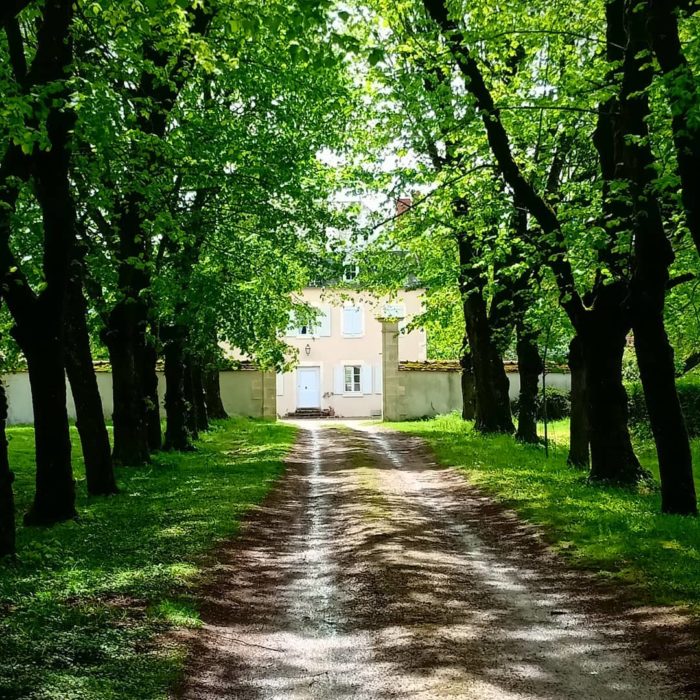
Family house.
History of Favray
Favray has preserved traces of mankind origin and beyond. Geology tells us that a warm sea covered the area tens millions of years ago, leaving fossilized shells and corals that can be seen when walking through the vineyards. Shaped stones, pottery and old coins have been found here and there and even a sword was found in the source… These artifacts are the testimony of human activity; maybe cavemen lived here, maybe Gallic and Romans had a camp in this valley… The three buildings of Favray’s lieu-dit also tells us how it was inhabited and exploited over the centuries: a manor house from the sixteenth century, a farm from the seventeenth century and a bourgeois house at the top of the hill from the eighteenth century.
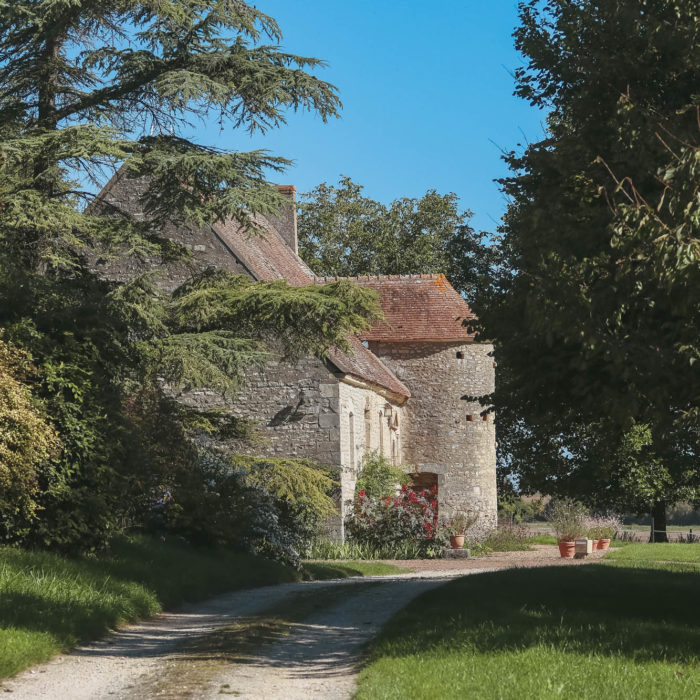
Buildings of Favray
Favray
An old wine press from the eighteenth century has been found in one of the buildings overlooking the hills, suggesting that Chateau Favray was a wine estate by that time. Unfortunately, during the nineteenth century the phylloxera destroyed almost all of France’s vineyards and Favray’s vine was not spared by this pest… In 1936, the winery was bequeathed to the hospice of Cosne-sur-Loire. Lands were exploited but the old houses charged with history were abandoned.
Petit Favray
The Manor’s house of Favray was a seignorial place which collected taxes for the passage through the swamp. This dwelling was Françoise Reugny De La Rivière’s house, also called “la dame de Favray”, the lady-in-waiting of Marguerite de France -the famous Queen Margot- the wife of Henri IV.
Grand Favray
At the end of an 800 meter path bordered with walnut trees and fields, the Favray farm appears, built just beside the source. It is a beautiful farmhouse typical of the region, with old stables and a beautiful bread oven.

Petit Favray.
Family
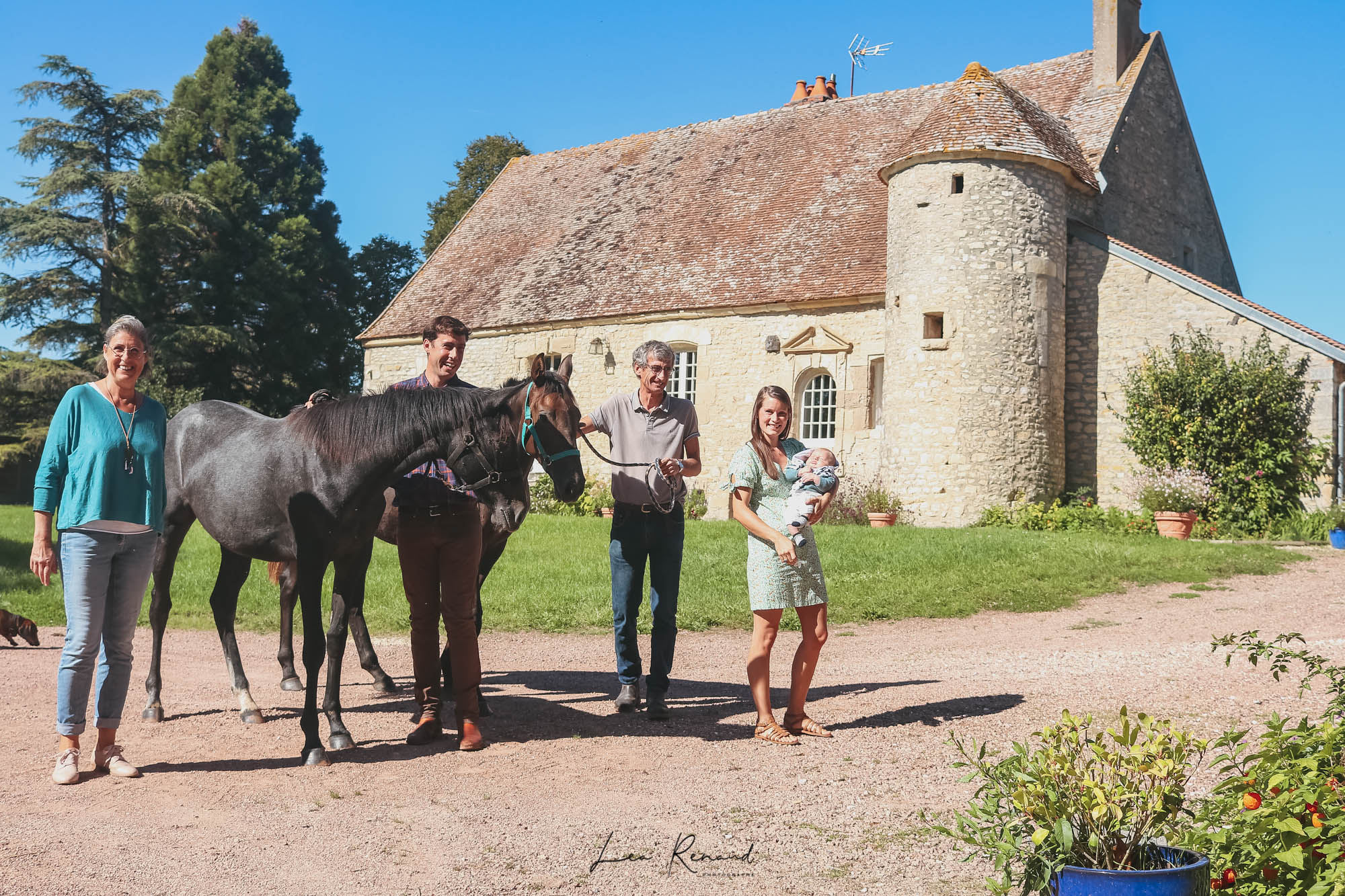
Catherine, Augustin, Quentin, Sophie et Robin.
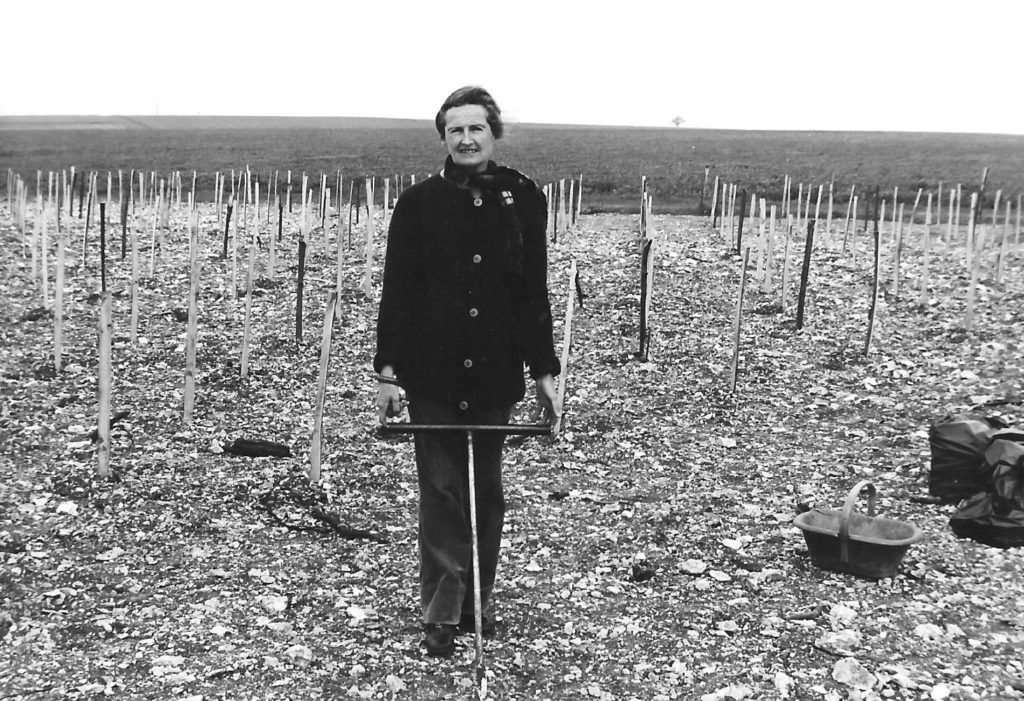
Marguerite David – first parcel planted at Favray – 1981.
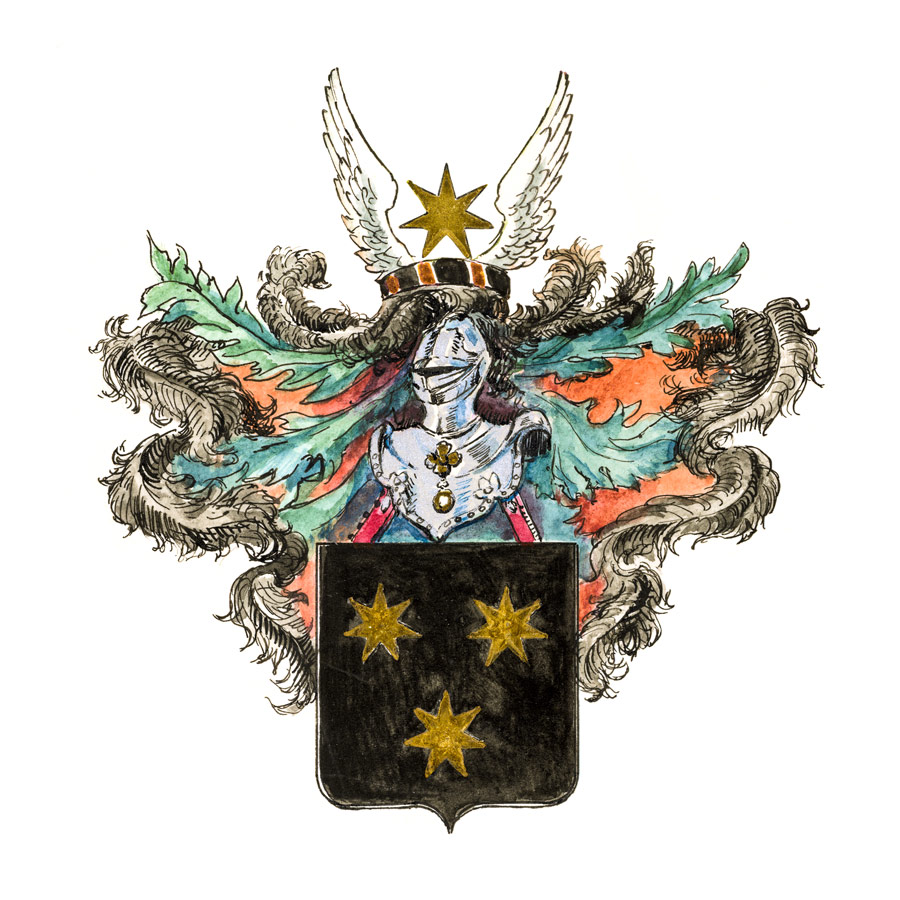
Coat of arms of the ancestors of the David family: the O’Morren.
The David Family
The David Family’s destiny could not have crossed Chateau Favray if Étienne -the son of a Parisian entrepreneur specialized in car leather and the heiress of an exotic wood merchant in the Faubourg Saint-Antoine- had not decided, while the Second World War was raging, to devote himself entirely to agriculture! Étienne went to an agricultural engineering school and began his career in agricultural development. At that time, Europeans needed to be fed after years of food restriction during the war.
Étienne met Marguerite David, a history and art lover, who graduated from the École du Louvre. Margarite loved the countryside where she spent part of her childhood. Together, they started looking for a farm to run. It was Marguerite who fell in love with Favray, its valley, its hill, its view and the beauty of the region. In 1957, they bought the whole estate at a candle auction and immediately started renovating it.
The revival of the winery truly began during the early 1980s when Quentin, the second of Marguerite and Étienne’s four children, decided to implicate himself in Favray. The first vines were planted in 1981, with the crazy bet of waking up the sleepy terroirs of Favray.
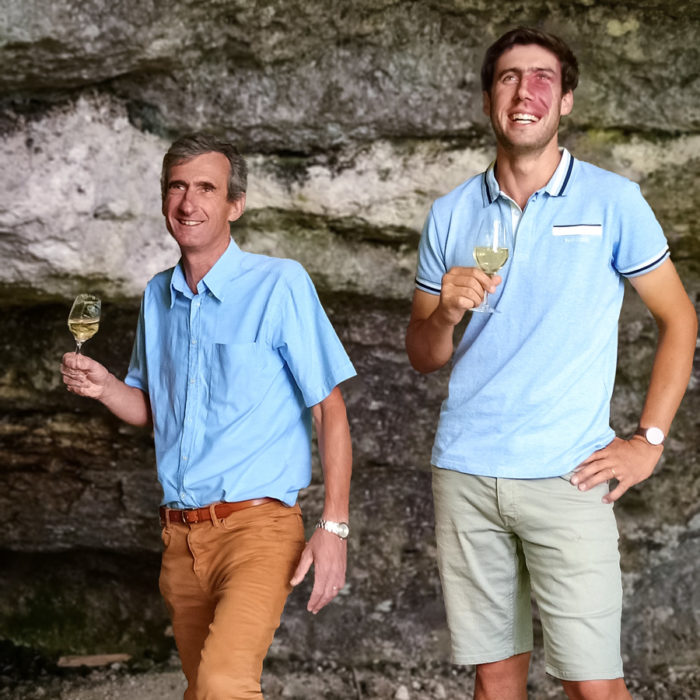
Quentin and Augustin in Favray’s caves.
Winemakers
Quentin was born in Paris in 1957. Since his youngest age, he had always been more attracted by the countryside than the city. He had to wait for the weekends to go and enjoy the countryside. After his baccalaureate (a French equivalent to high school diploma), he studied agricultural engineering in Angers (Loire Valley) with the ambition to further settle in Favray.
During his military service, he went to Ivory Coast for 18 months for a cooperation mission. When he returned to Africa, he had no vineyard, no cellar and no customer but he had the firm intention to rebuild Favray’s winery, even though the winery had disappeared more than a century ago. With the help of its parents, the first vines were planted on the top of the hill and the cellar was built in 1984.
Inhabitants of Pouilly were very curious about this young Parisian about to vinify his first vine in Nohain valley, in the north-east of the appellation of origin. But the first cuvée were quickly sold and shortly after were rewarded by medals at agricultural shows, meaning that the winery had taken a good start. Hectares after hectares, Favray’s lands were replanted with grapevines.
His son Augustin joined him in 2017.
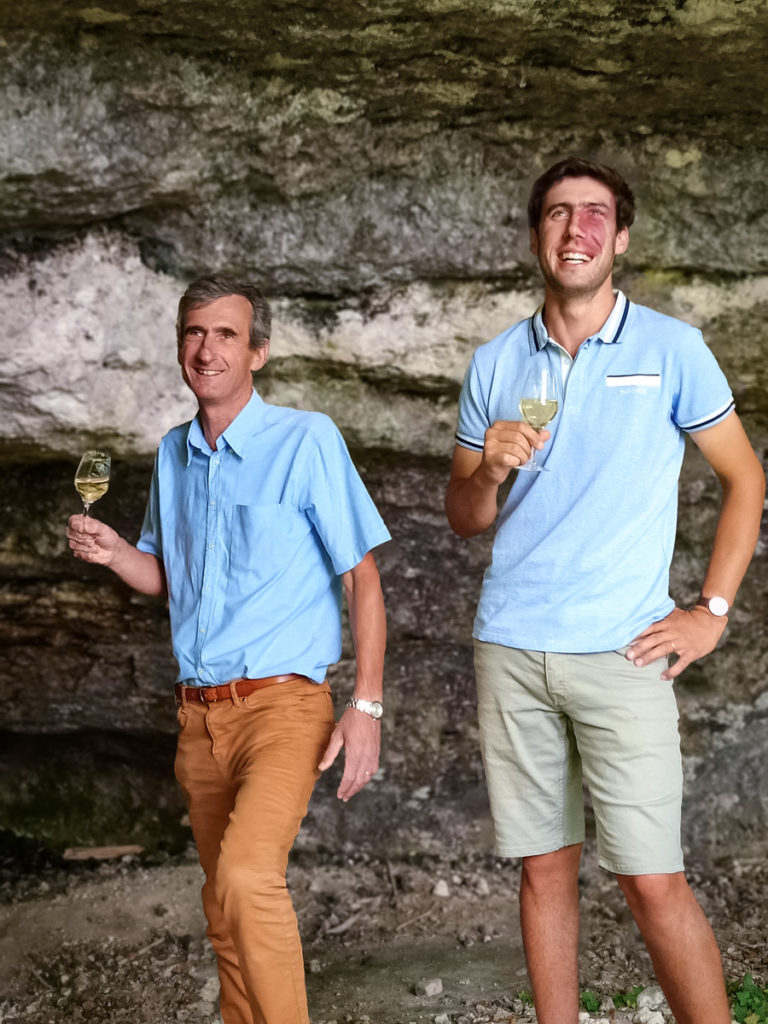
Quentin and Augustin in Favray’s caves.
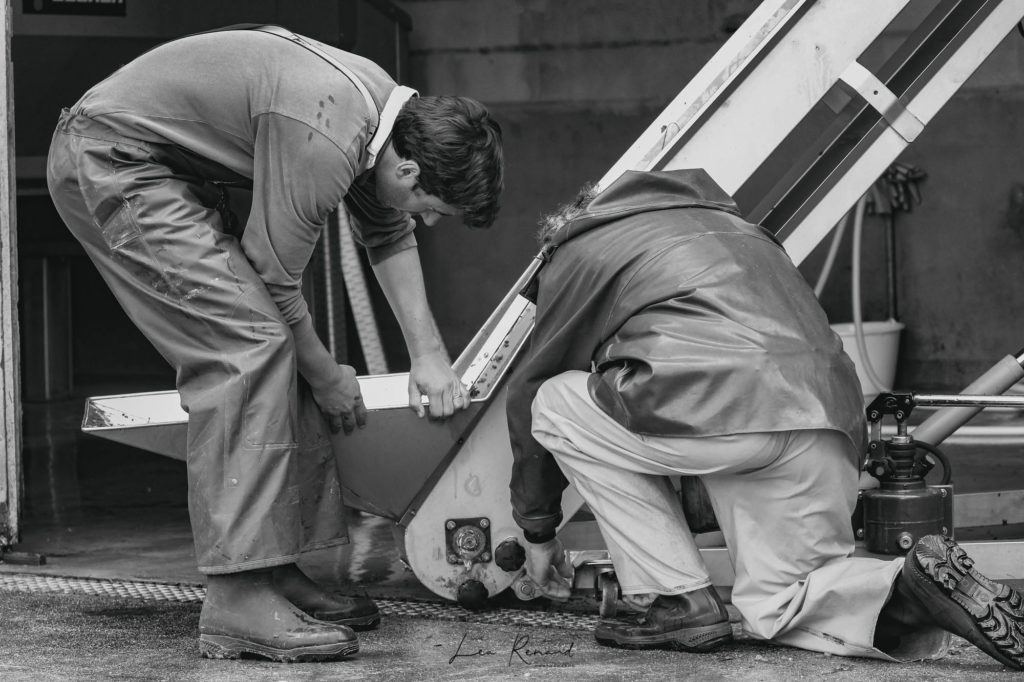
Winemakers
Augustin grew up in Favray, a privileged childhood for a boy who loved roaming the countryside through the seasons. He also went to the agricultural engineering school of Angers (ESA), but he was rapidly attracted by Southern, Mediterranean and the Oriental countries. When he turned 21 years old, he took a sabbatical year to travel around the Mediterranean, at a time when the Arab Spring was raising many hopes.
After working one year in Paris, he moved to Morocco to outline the Moroccan oil industry. He settled with Sophie in Casablanca for two years. They got engaged in Marrakech just before they came back to France with new projects: Sophie wanted to create a top-of-the-range brand of saddlery and leather goods while Augustin wanted to take over from his father in the winery.
Arts & passion
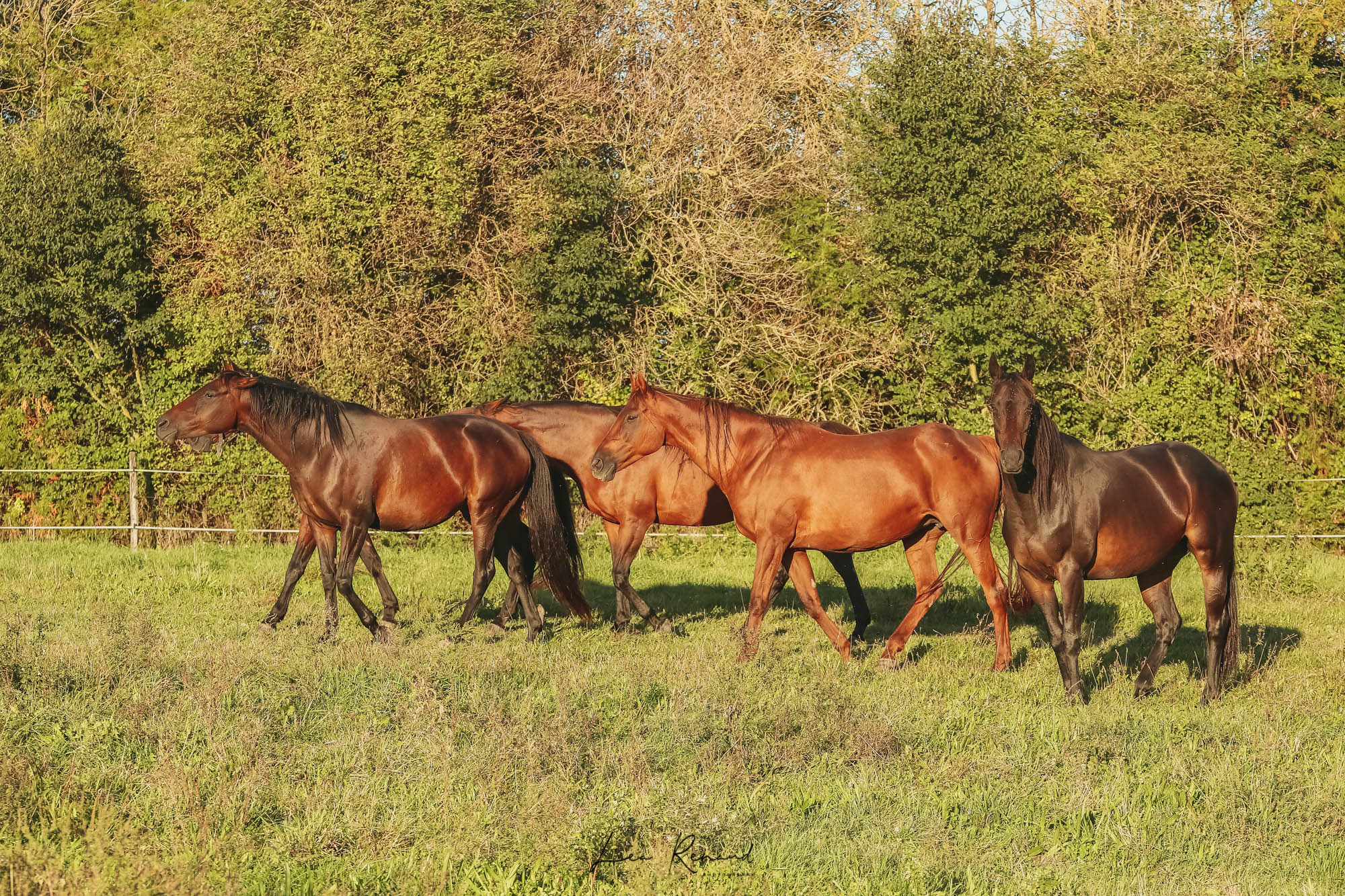
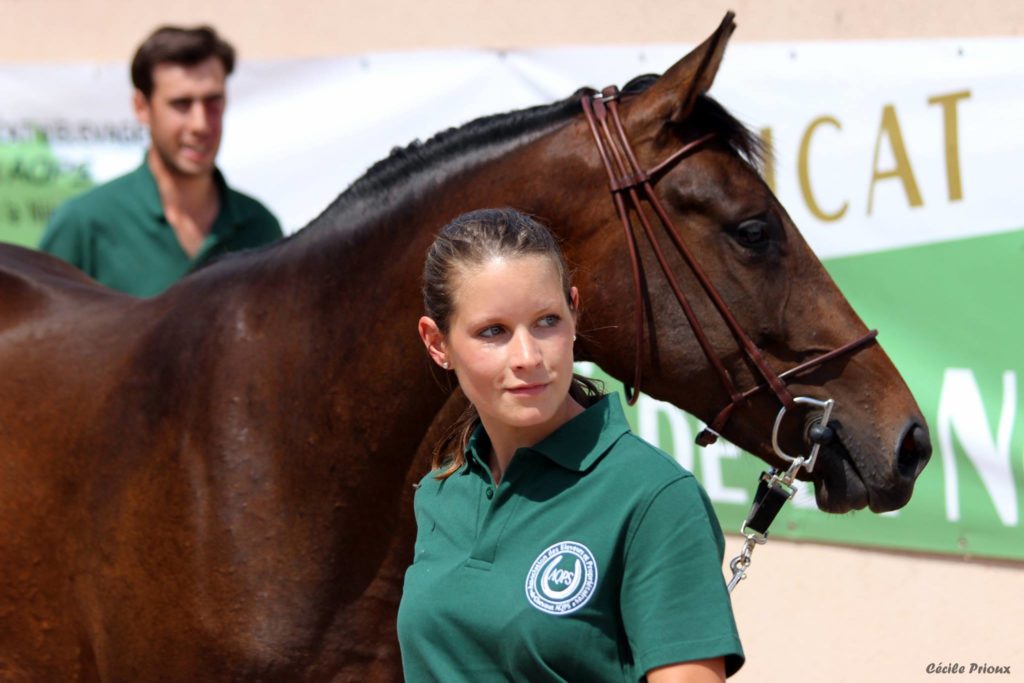
Horse races
We breed mainly non-thoroughbreds horses in the meadows of Favray. This breed is typically from Nièvre and comes from successive breeding of English thoroughbreds and selle français. Non-thoroughbreds horses are mainly 90% purebred. The small part of selle français gives them resistance and endurance which make a real difference during steeple chases.

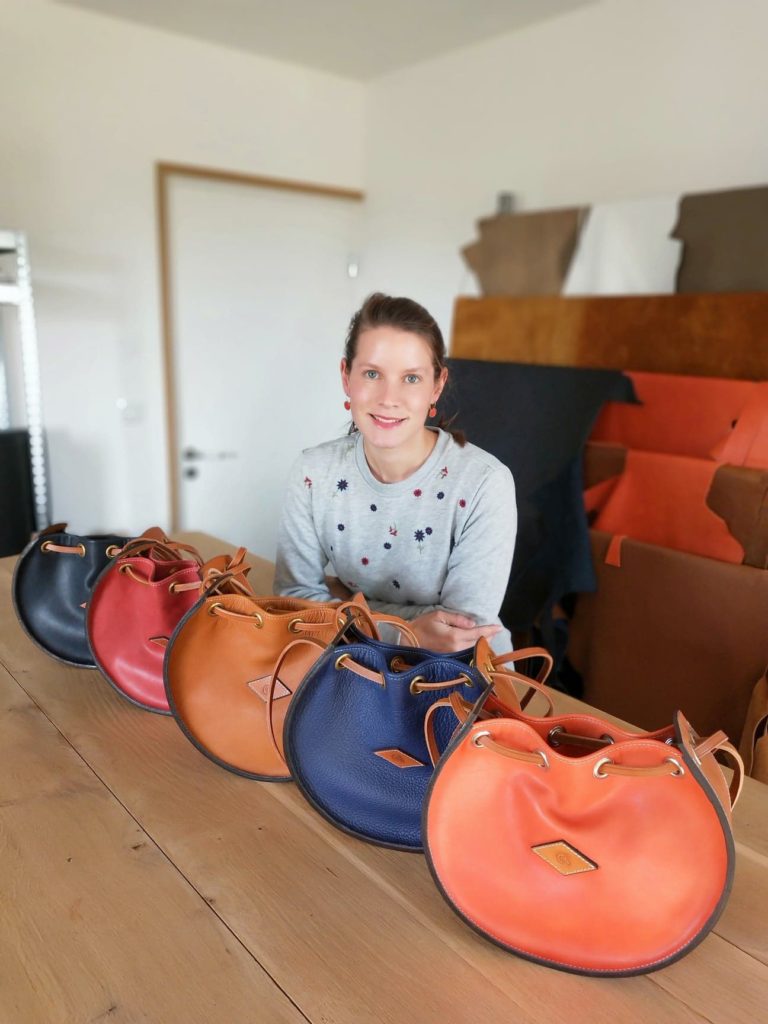
Saddlery and leather goods
Horse inspires elegance and refinement. Its harnessing is therefore in its image, and it is not surprising that famous French fashion brands exploit this symbol. It is obviously the case for the Hermès brand, for which Sophie worked at the end of her training in saddlery and leather goods. Since then, Sophie has created her own brand: La Charnaye.
La Charnaye is a good example of “Made in France” fashion: noble materials rigorously chosen, tailor-made creations, from halter to handbag. Sophie likes sober elegance, the one that is sufficient in itself. Her precise and meticulous know-how and her creativity give her work a singular dimension, just like the most beautiful cuvée.
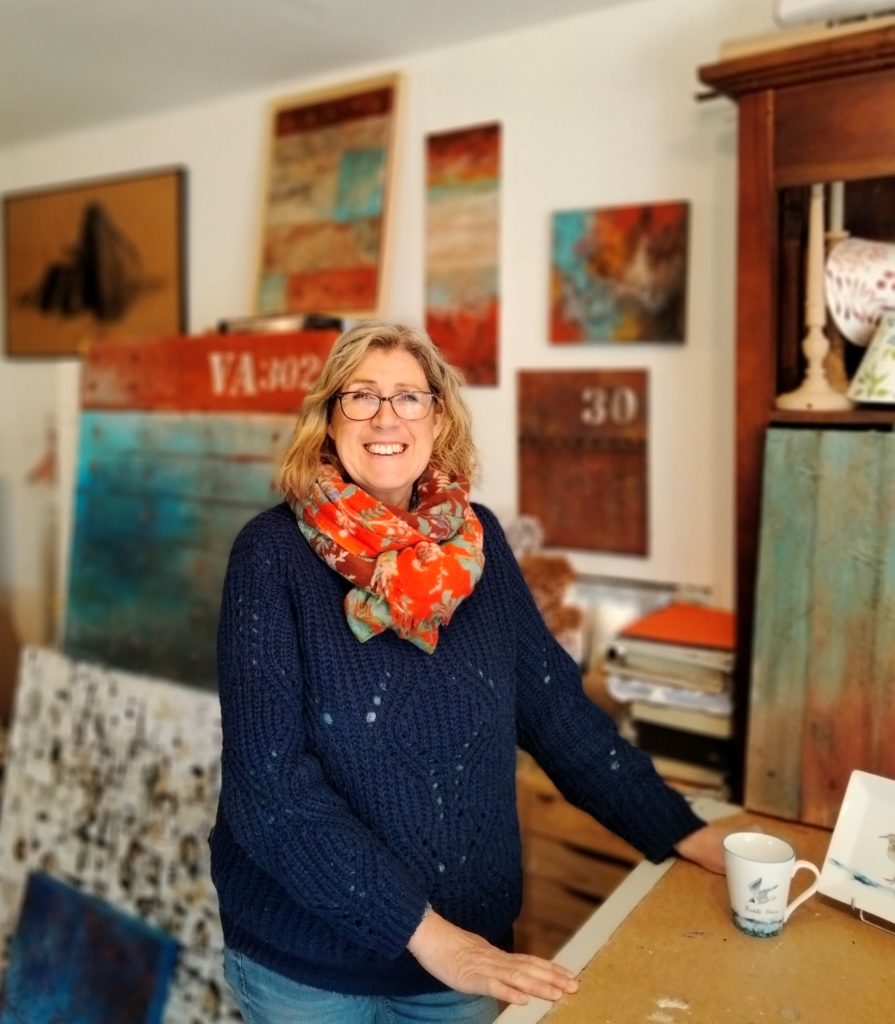
Painting and decorating
Ladies of Favray seem to always have a special place within the estate. Among them, Catherine, Quentin’s wife, is certainly the one who gives Favray the most colors. Graduate from the Lyon School of Fine Arts, she paints on porcelain, earthenware, canvas, using classical or contemporary styles. She laughs, smiles, sings lyrical repertoires, jazz or gospel. So many talents that make her a complete artist with a communicative joie de vivre!
